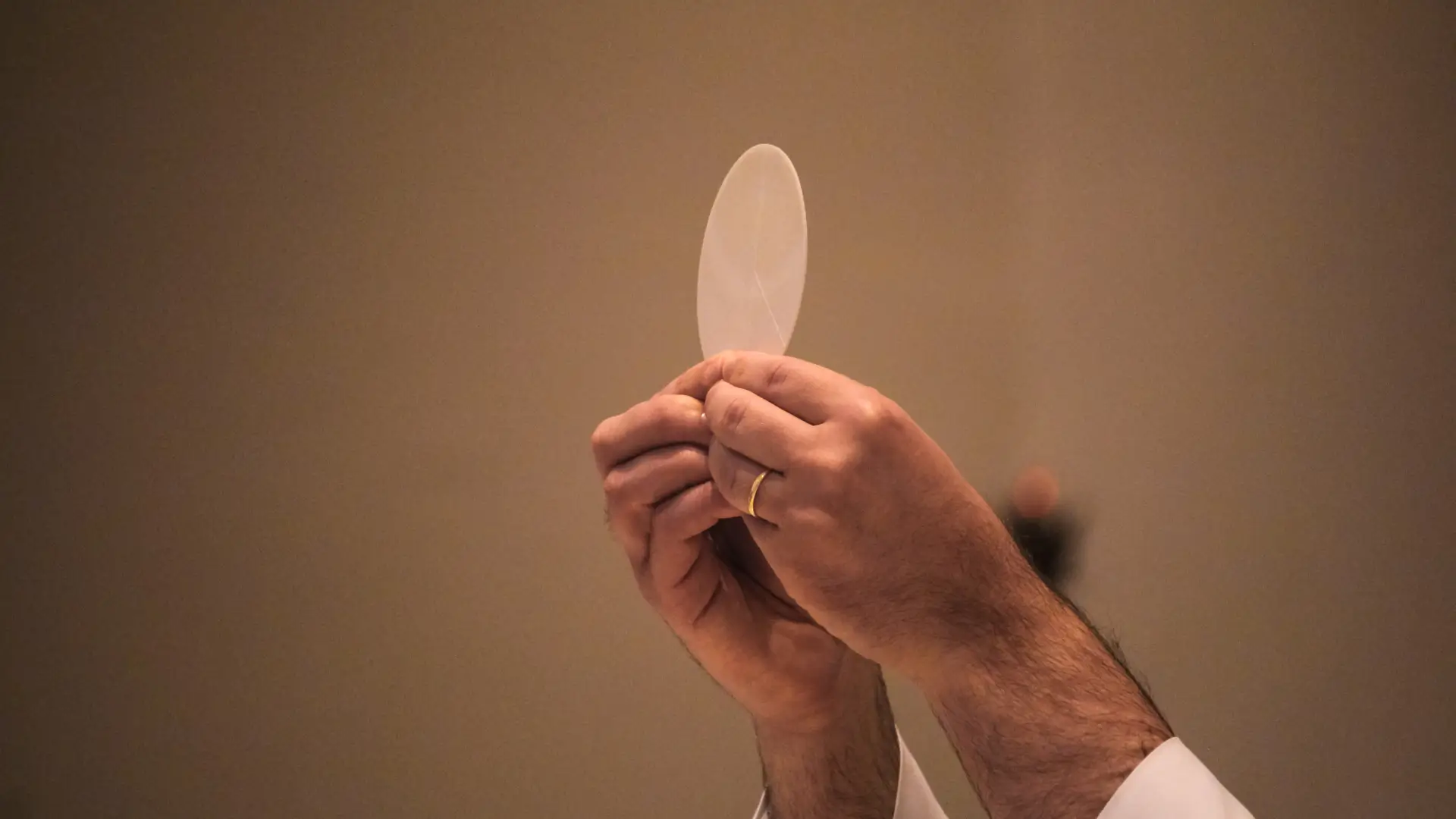The physical appearance of Jesus, including His height, has been a subject of curiosity and scholarly debate for centuries. While the Bible does not provide a direct description of His stature, careful examination of certain biblical narratives offers indirect clues. By analyzing these scenarios and considering historical context, we can infer that Jesus was likely of average height for a man of His time, which was 5’1″ inch to 5’5″ inches.
Introduction
The absence of explicit physical descriptions of Jesus in the Scriptures suggests that His physical attributes were not the focus of His ministry or message. However, by exploring specific biblical accounts, we can gather insights into His possible height. This article delves into key narratives that imply Jesus’s stature was unremarkable and consistent with the average male height in 1st-century Judea.
The Most Well-Known Analysis of Height: The Story of Zacchaeus
Scripture Reference: Luke 19:1-10
Context:
As Jesus passes through Jericho, Zacchaeus, a wealthy tax collector, is eager to see Him. Due to his short stature, Zacchaeus cannot see over the crowd surrounding Jesus. Determined, he climbs a sycamore tree to get a better view as Jesus walks by.
Scenario Analysis:
- Emphasis on Zacchaeus’s Height: The narrative explicitly mentions that Zacchaeus is “short in stature,” which is the primary reason he cannot see Jesus over the crowd. This detail highlights his physical limitation and sets the stage for his extraordinary effort to see Jesus.
- Implication for Jesus’s Height:
- Jesus Among the Crowd: Jesus is depicted as moving within the crowd, not standing apart or above it. If Jesus were exceptionally tall, He might have been visible over the heads of the crowd, even to someone as short as Zacchaeus. The fact that Zacchaeus could not spot Jesus without climbing a tree suggests that Jesus did not stand out height-wise among the people.
- No Contrast in Heights: The narrative does not contrast Zacchaeus’s short stature with Jesus’s height. If Jesus were notably taller or shorter than average, such a contrast might have been drawn to emphasize differences between them. Instead, the focus remains solely on Zacchaeus’s efforts.
- Cultural Context: In a society where physical attributes could denote social status or divine favor, any extraordinary physical trait of a prominent figure like Jesus would likely have been noted. The absence of any mention of Jesus’s height in this context suggests that His stature was typical.
Conclusion:
The story of Zacchaeus implies that Jesus was of average height. Zacchaeus’s inability to see Jesus over the crowd, coupled with the lack of any mention of Jesus standing out physically, supports the notion that Jesus blended in with those around Him in terms of height.
Judas’s Identification of Jesus with a Kiss
Scripture References: Matthew 26:47-49; Mark 14:43-45; Luke 22:47-48; John 18:2-3
Context:
In the Garden of Gethsemane, Judas Iscariot leads a group of soldiers to arrest Jesus. To identify Him among the disciples in the dimly lit garden, Judas signals by greeting Jesus with a kiss.
Scenario Analysis:
- Need for Identification: The fact that Judas must point out Jesus specifically indicates that He was not immediately distinguishable from His disciples. This suggests similarity in appearance and stature among the group.
- Implication for Jesus’s Height:
- Indistinct Among Disciples: If Jesus had been significantly taller or had any remarkable physical feature, the soldiers might have recognized Him without Judas’s help. The necessity of a sign underscores that Jesus did not have an exceptional height that set Him apart.
- Group Homogeneity: The disciples, being from similar regional and cultural backgrounds, likely shared common physical characteristics. Jesus’s ability to blend in with them further implies average physical attributes.
Conclusion:
Judas’s need to identify Jesus explicitly suggests that His height was unremarkable. This scenario reinforces the idea that Jesus’s physical appearance, including His stature, was typical for His contemporaries.
The Crowd’s Interaction in Nazareth
Scripture Reference: Luke 4:16-30
Context:
Jesus returns to Nazareth, His hometown, and reads from the scroll of Isaiah in the synagogue. He declares that the prophecy is fulfilled in Him, which astonishes the listeners.
Scenario Analysis:
- Familiarity of the Townspeople: The people of Nazareth knew Jesus as “Joseph’s son.” Their reaction to His proclamation is one of skepticism, rooted in their familiarity with Him as an ordinary member of their community.
- Lack of Mention of Physical Distinction: There is no reference to any extraordinary physical traits that would set Jesus apart. If He had an unusual height or appearance, it might have been noted, especially in a context where the townspeople are questioning His authority and identity.
- Implication for Jesus’s Height: The absence of any comment on physical attributes suggests that Jesus was of average height and appearance, reinforcing His portrayal as an ordinary individual delivering an extraordinary message.
Conclusion:
The interaction in Nazareth indicates that Jesus did not possess any remarkable physical characteristics, including exceptional height. His townspeople’s focus on His familiar background rather than any physical distinction supports this inference.
Jesus in the Crowd
Scripture References: Luke 4:30; John 7:10-11
Context:
On multiple occasions, Jesus moves through crowds without drawing undue attention. In one instance, He passes through an angry crowd intending to harm Him. In another, He attends a festival secretly.
Scenario Analysis:
- Ability to Blend In: Jesus’s movement through crowds without being noticed suggests that He did not stand out physically. If He were significantly taller than those around Him, it would have been difficult to go unnoticed.
- Implication for Jesus’s Height: His inconspicuous presence in crowds implies an average height. A taller individual might have been more easily spotted or recognized.
- Cultural Considerations: In public gatherings, physical distinctions could attract attention. Jesus’s ability to navigate these spaces discreetly supports the idea that His stature was common.
Conclusion:
These accounts demonstrate that Jesus likely had a typical physical appearance and height, allowing Him to move among people without immediate recognition.
Other Instances Supporting an Average Height
There are also numerous occasions where Jesus’s height could have been mentioned if it were extraordinary:
- The Baptism by John the Baptist (Matthew 3:13-17): No physical differences between Jesus and John are noted.
- The Transfiguration (Matthew 17:1-9): No mention of height differences among Jesus, Moses, and Elijah.
- Mary Magdalene Mistaking Jesus for a Gardener (John 20:14-16): Suggests Jesus’s appearance was average.
- Disciples on the Road to Emmaus (Luke 24:13-35): They do not recognize Jesus by His appearance.
These instances collectively imply that Jesus’s height was within the normal range for men of His time. If He had been unusually tall or short, it might have been remarked upon in these contexts.
Height Comparisons in the Bible: The Example of King Saul
Scripture References: 1 Samuel 9:2; 1 Samuel 10:23
Description:
King Saul is described as “a handsome young man. There was not a man among the people of Israel more handsome than he. From his shoulders upward he was taller than any of the people.”
Significance:
- Noting Physical Attributes: The Bible explicitly mentions Saul’s height, emphasizing that he was a head taller than others. This detail sets him apart as a leader with a commanding physical presence.
- Cultural Context: Height was associated with strength and leadership qualities. Highlighting Saul’s stature reinforced his suitability as king in the eyes of the people.
- Comparison to Jesus: The deliberate mention of Saul’s height, even though the difference was just a head taller, indicates that the Bible records significant physical traits when they are pertinent. The absence of similar descriptions for Jesus suggests that He did not possess unusual height.
Conclusion:
The example of King Saul demonstrates that the Scriptures note exceptional height when relevant. The lack of such mention regarding Jesus reinforces the inference that He was of average stature.
Historical and Archaeological Context Supporting an Average Height
Average Height in 1st-Century Judea
Archaeological studies of skeletal remains from the region provide estimates of average heights:
- Men: Approximately 5 feet 1 inch to 5 feet 5 inches (155 cm to 165 cm)
- Women: Approximately 4 feet 9 inches to 5 feet 2 inches (145 cm to 157 cm)
Factors Influencing Height
- Nutrition: Diets were primarily composed of grains, legumes, fruits, vegetables, and limited animal protein. Nutritional limitations could affect growth potential.
- Health Conditions: Common ailments and lack of modern medical care could hinder physical development.
- Genetic Factors: Regional genetics influenced physical characteristics, including stature.
Implications for Jesus
- Carpenter’s Physique: As a carpenter or builder (Mark 6:3), Jesus likely had a muscular build from manual labor. This work required strength and endurance but did not necessarily correlate with exceptional height.
- Traveling Preacher: Jesus’s extensive travels on foot throughout Judea and Galilee indicate physical fitness and stamina consistent with an average-height individual accustomed to long journeys.
Conclusion: Synthesizing the Evidence
By examining key biblical narratives and historical data, we can reasonably conclude that Jesus was of average height for a man of His time.
Absence of Notable Physical Descriptions
- The Scriptures do not provide explicit details about Jesus’s height or appearance.
- The focus remains on His teachings, miracles, and spiritual authority rather than physical attributes.
Consistency with Historical Averages
- Archaeological evidence supports an average male height of approximately 5 feet 1 inch to 5 feet 5 inches (155 cm to 165 cm) in 1st-century Judea.
- Jesus’s likely physical build as a laborer aligns with this average stature.
Contrasts with Larger Figures
- The Bible explicitly mentions individuals with exceptional height, such as King Saul, emphasizing their physical attributes when relevant.
- The absence of such descriptions for Jesus suggests His height was unremarkable and did not define His role or impact.
Church Teachings and Emphasis
- No Official Stance: There is no formal position within any major Christian denomination regarding the exact height of Jesus. The Scriptures do not provide explicit details about His physical appearance, including His height.
- Spiritual Focus: The Church emphasizes Jesus’s message of love, redemption, and salvation. Physical attributes are considered secondary to His teachings and divine mission.
- Theological Perspective: The lack of emphasis on Jesus’s physical appearance aligns with biblical themes that prioritize inner virtues over outward appearances (e.g., 1 Samuel 16:7).
Final Thoughts
The exploration of Jesus’s height underscores a broader theological theme: the emphasis on inner virtues over outward appearances. Jesus’s influence stemmed from His message of love, compassion, and redemption, resonating across cultures and eras. His likely average stature symbolizes His accessibility and relatability to all people.
While the exact measurement of Jesus’s height remains unknown, the convergence of scriptural analysis and historical context allows us to infer that He embodied the common humanity He came to serve. This understanding enriches our appreciation of His life and ministry, highlighting that His significance transcends physical attributes.






